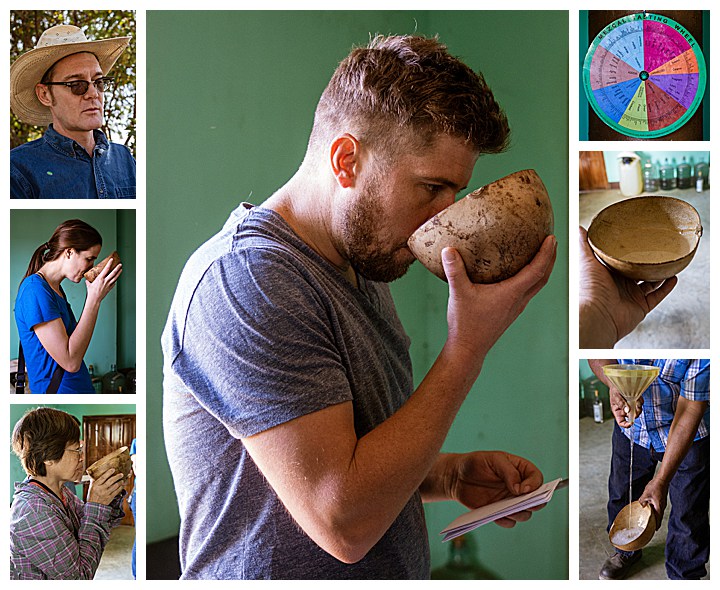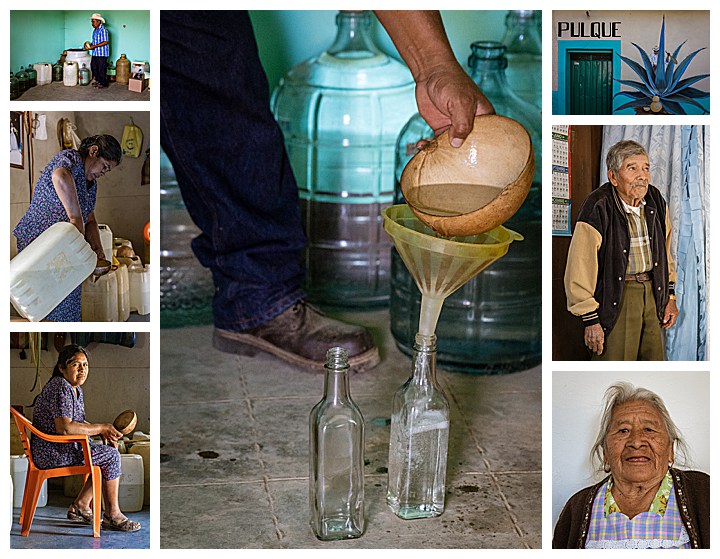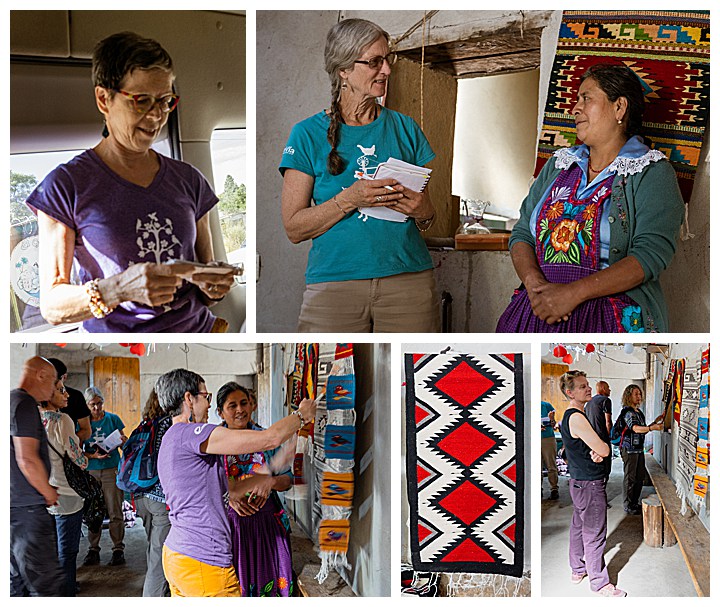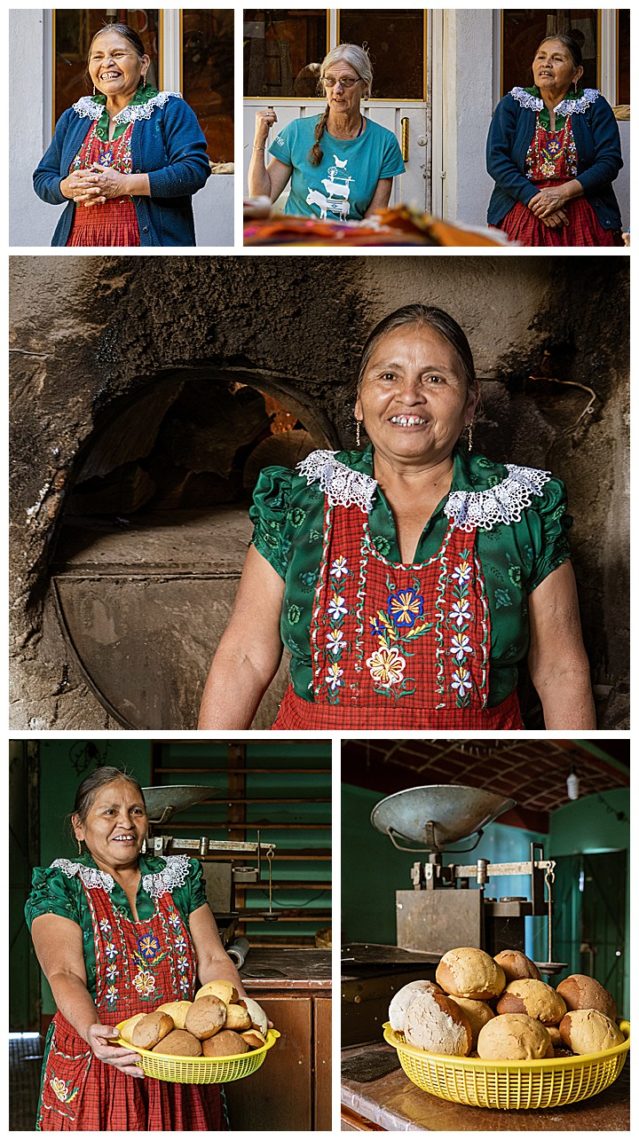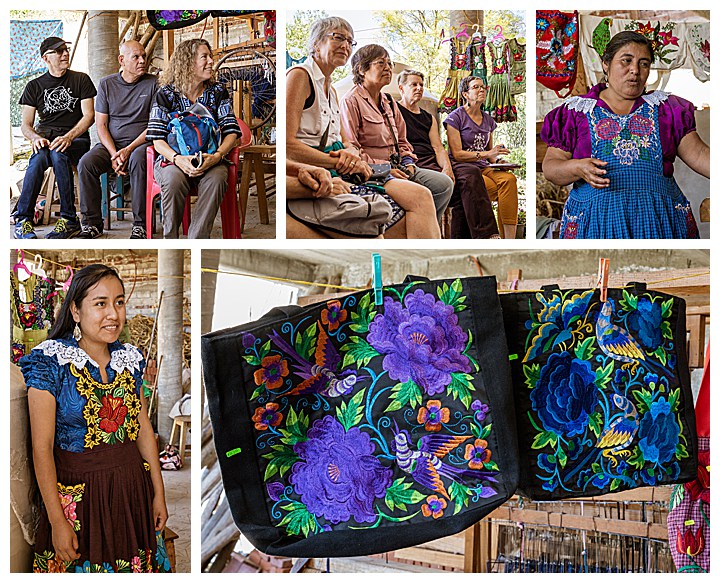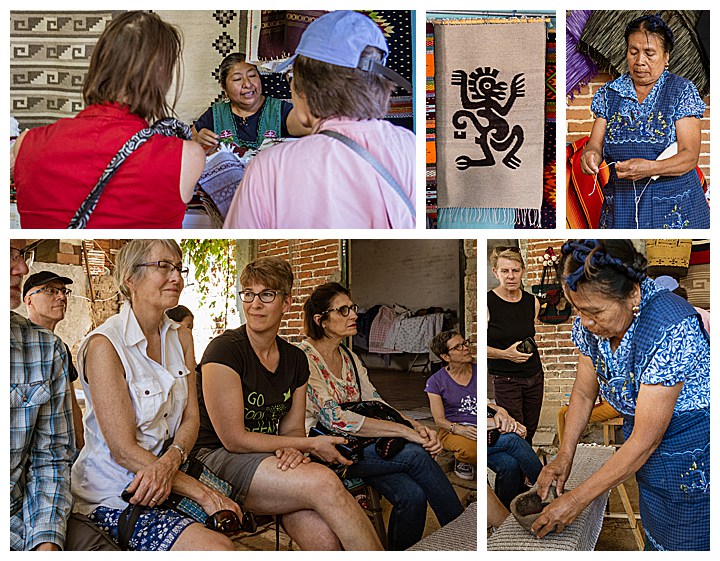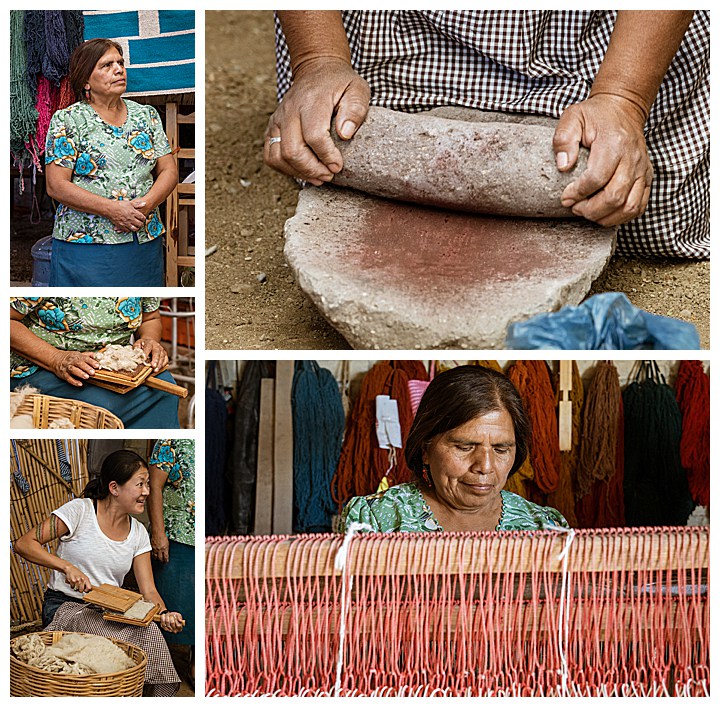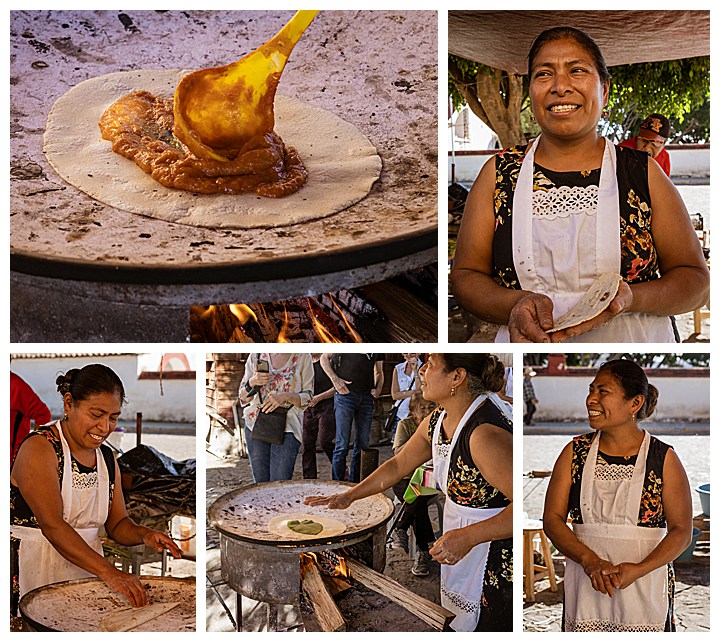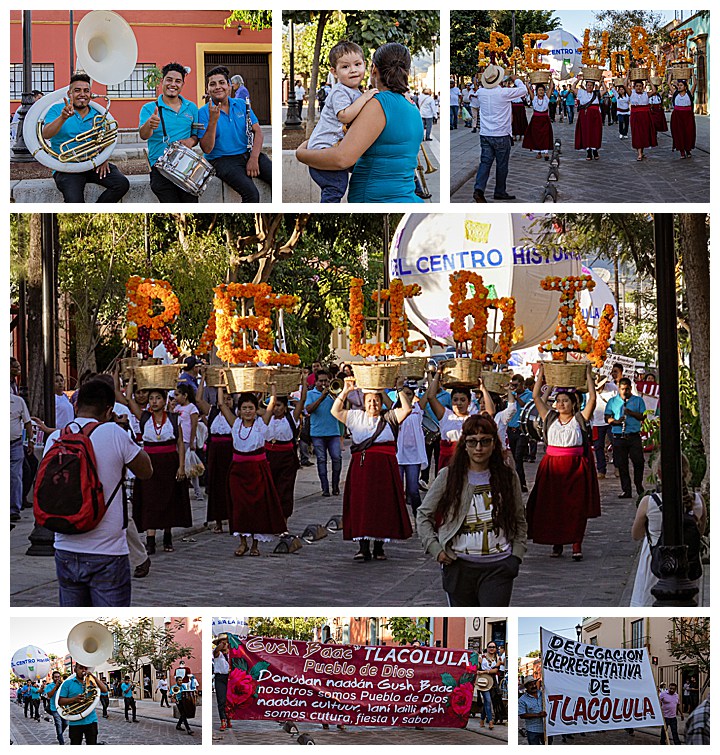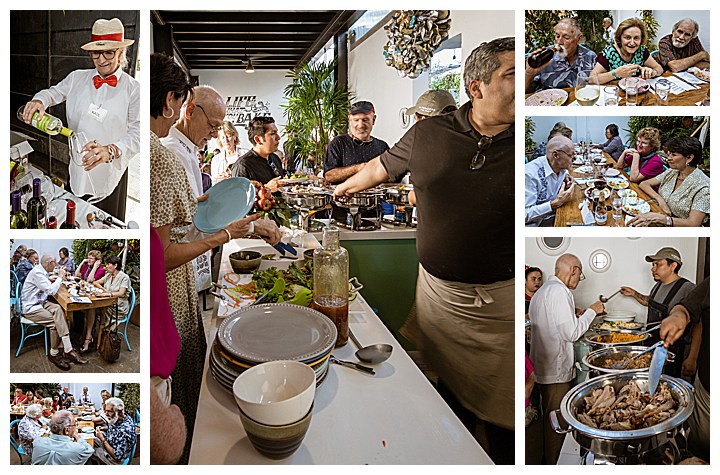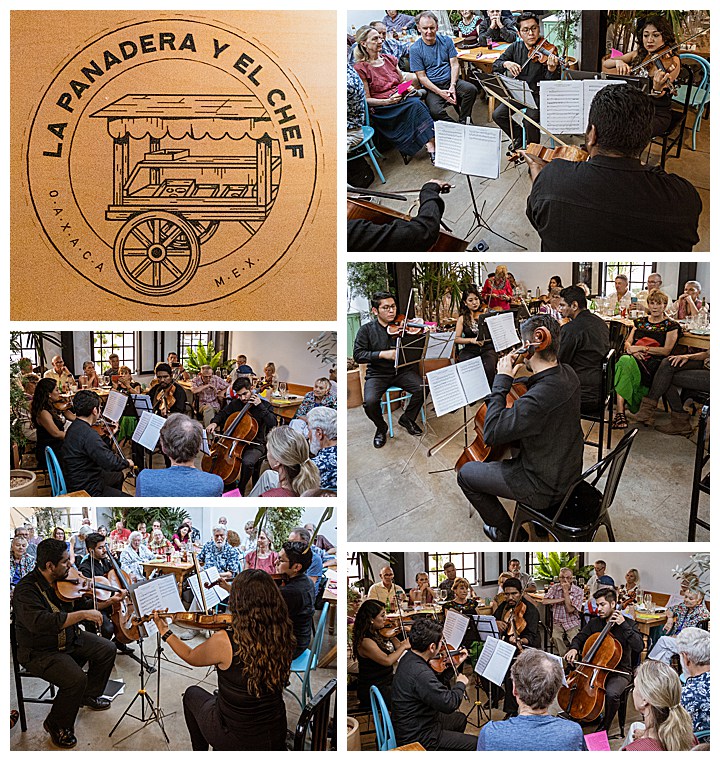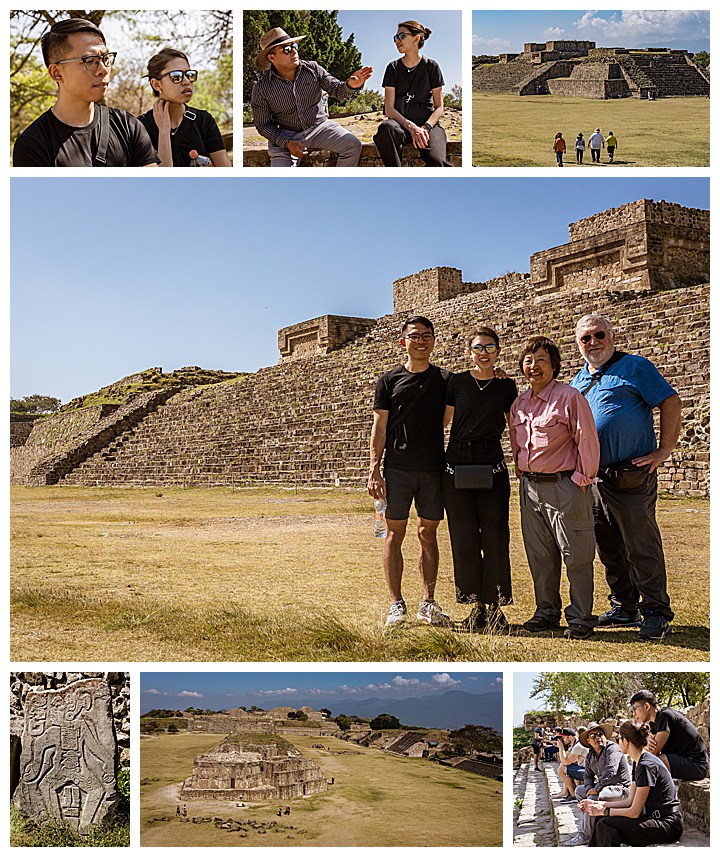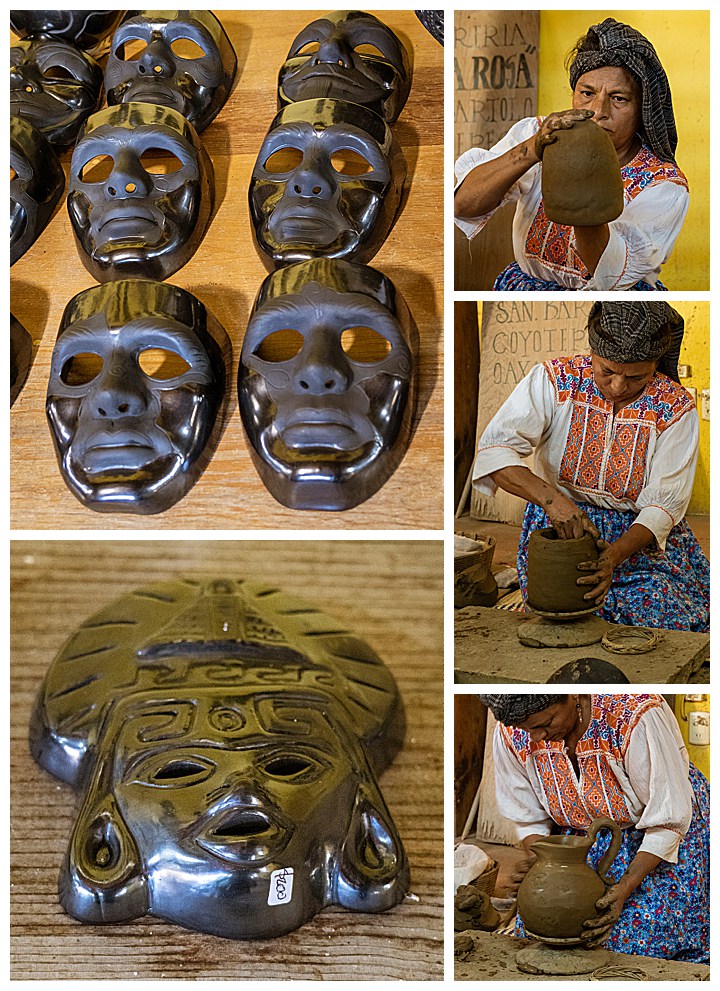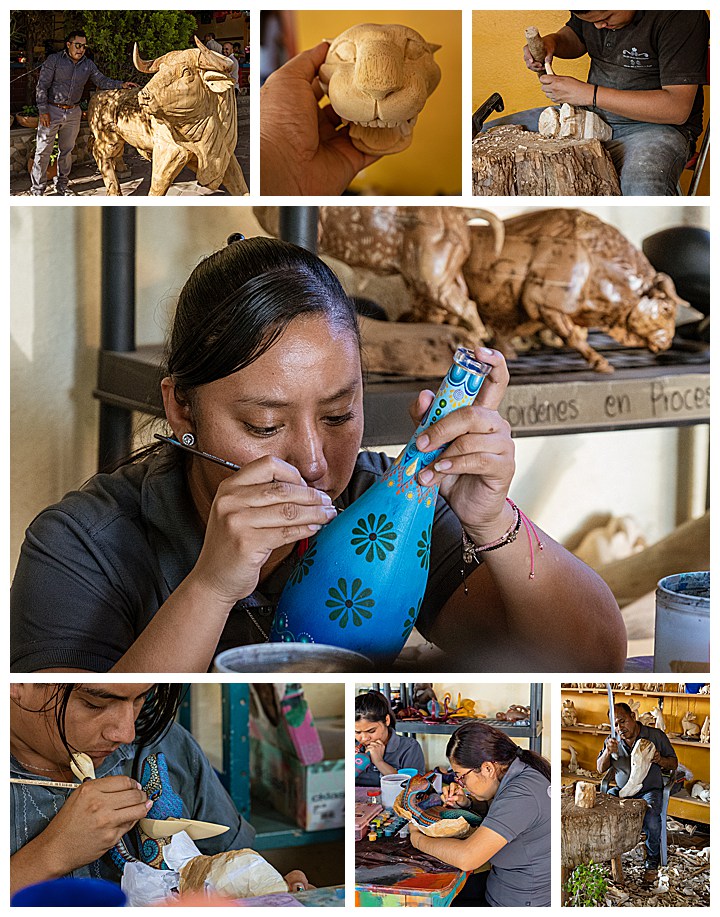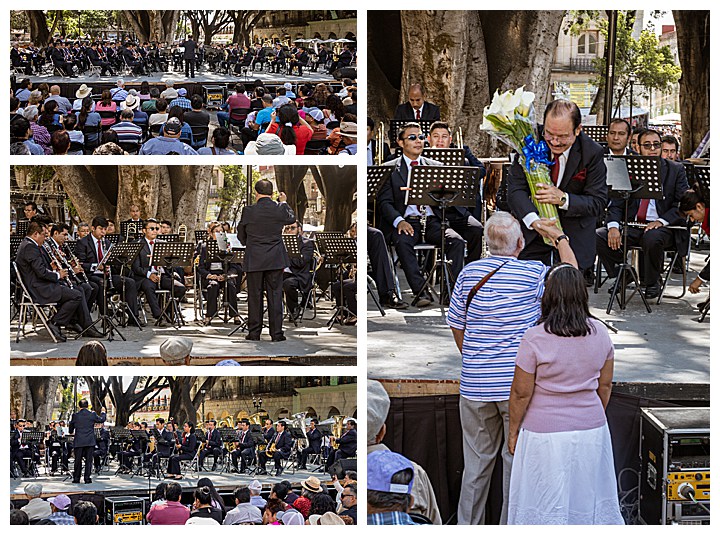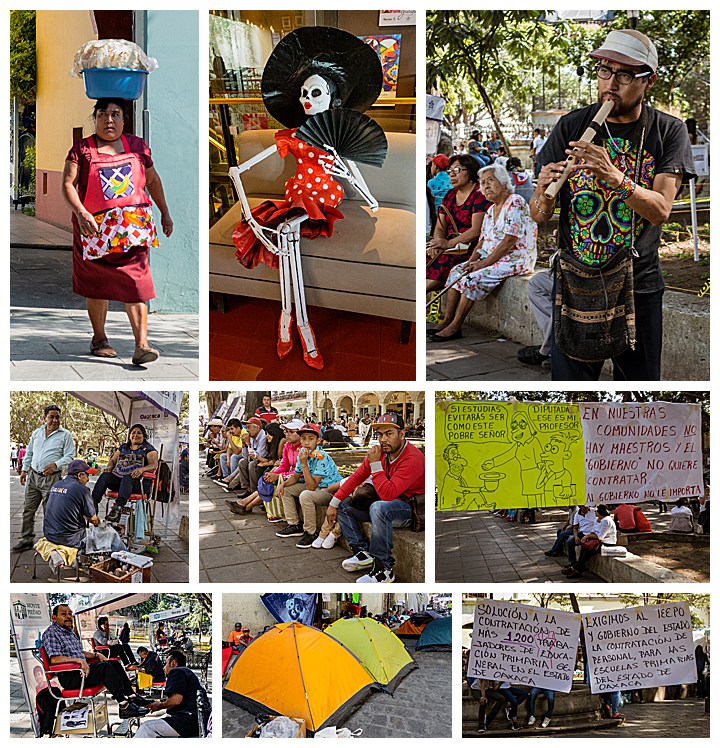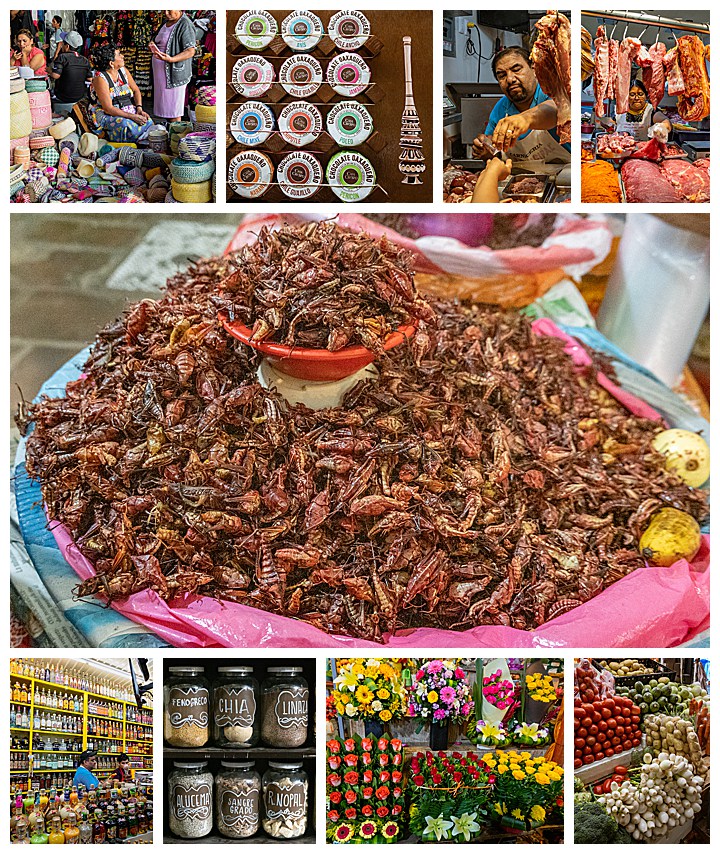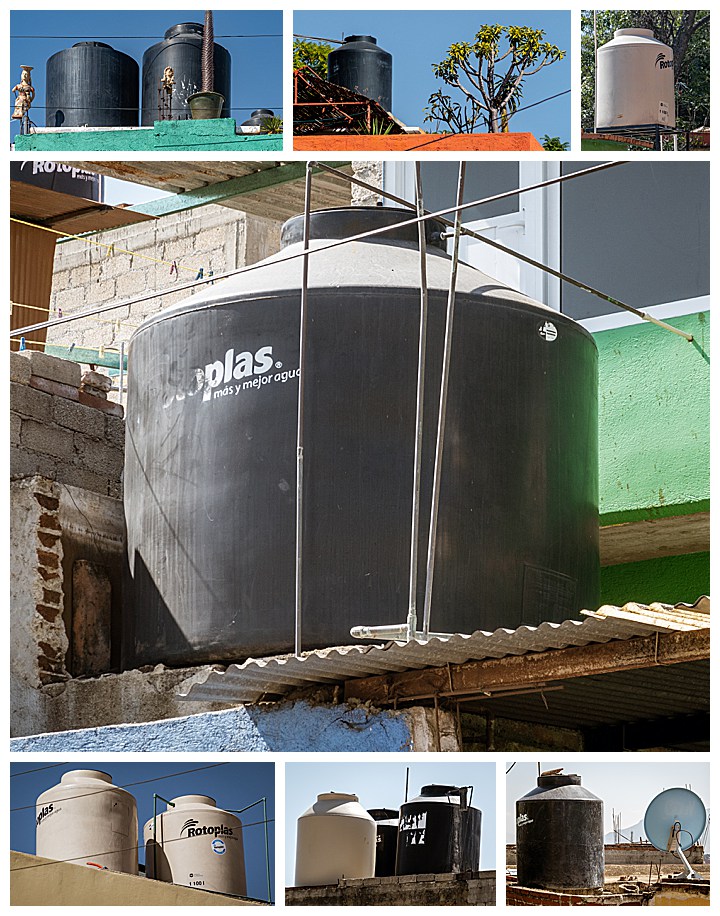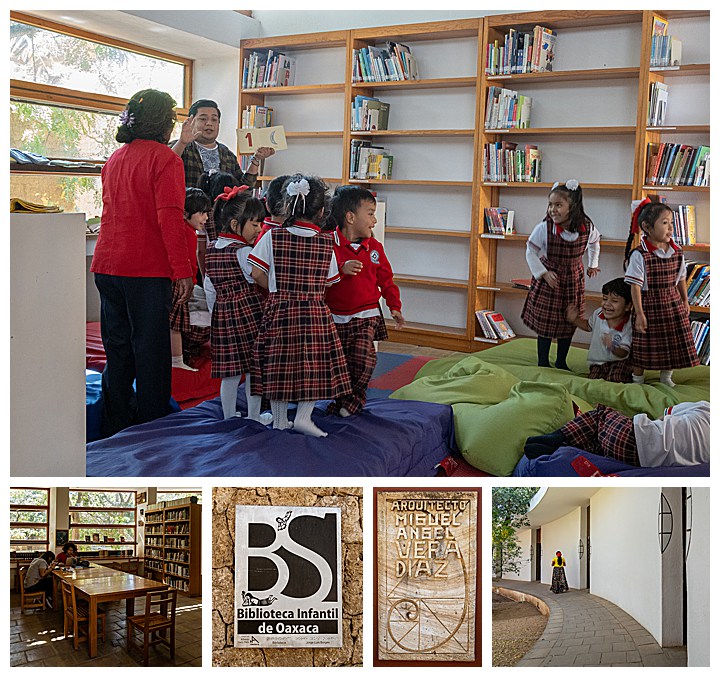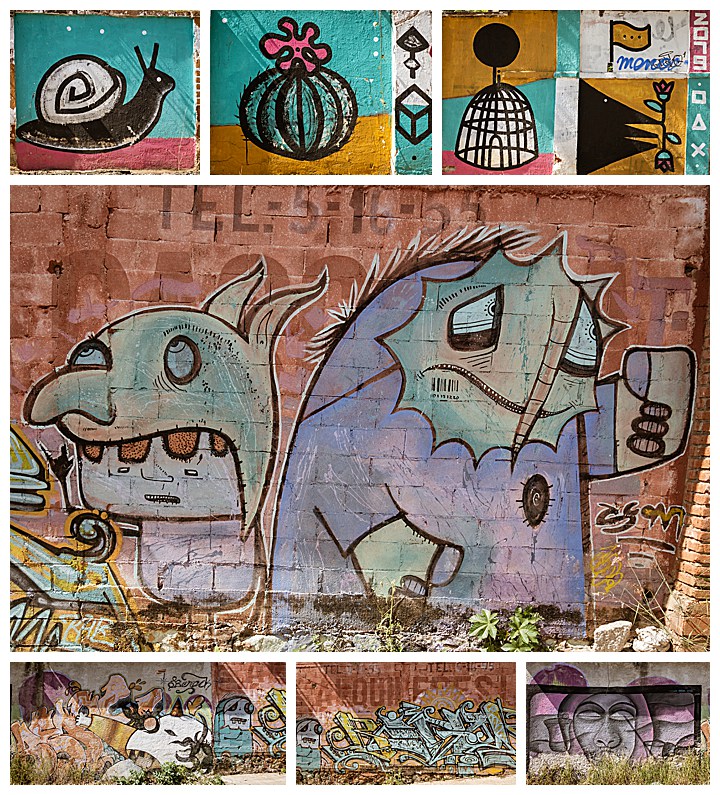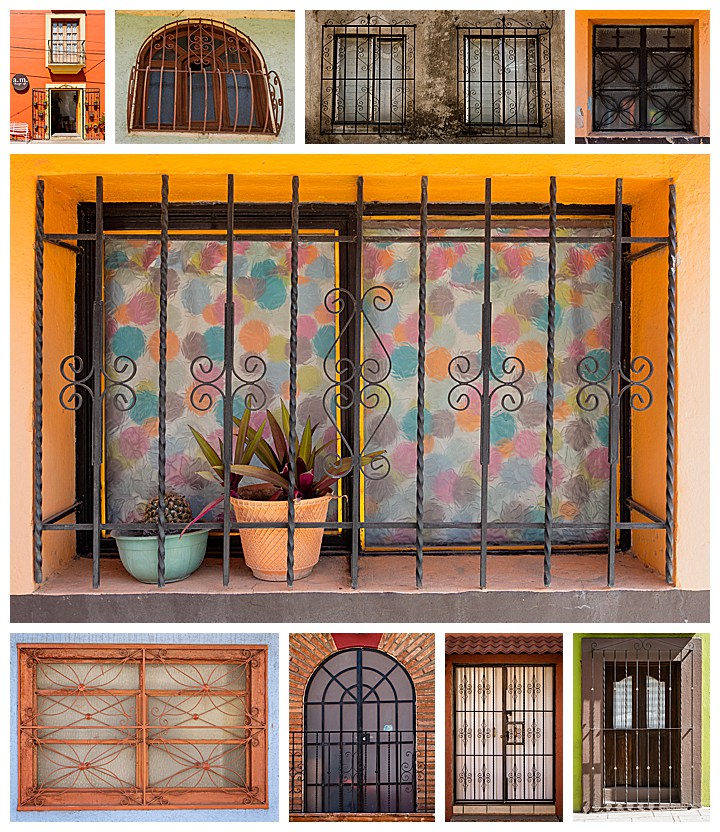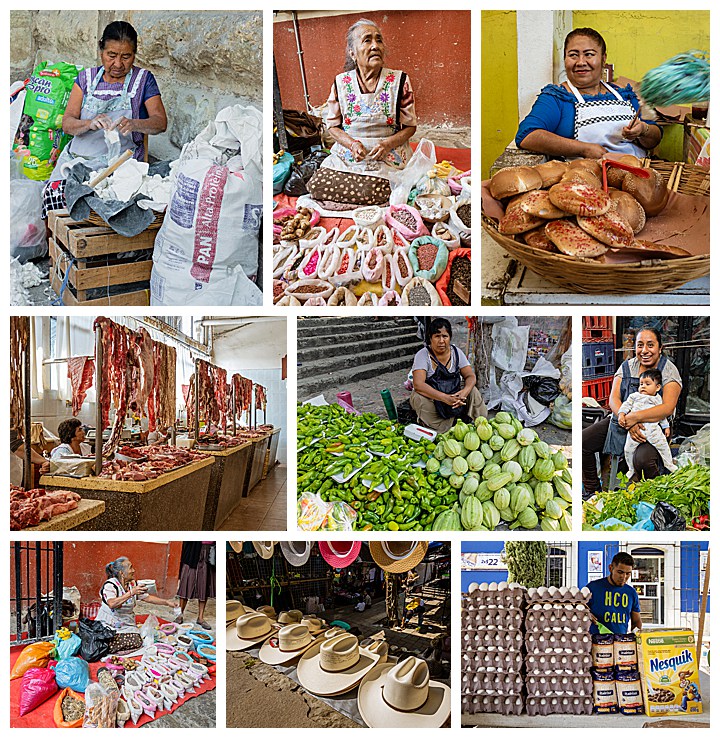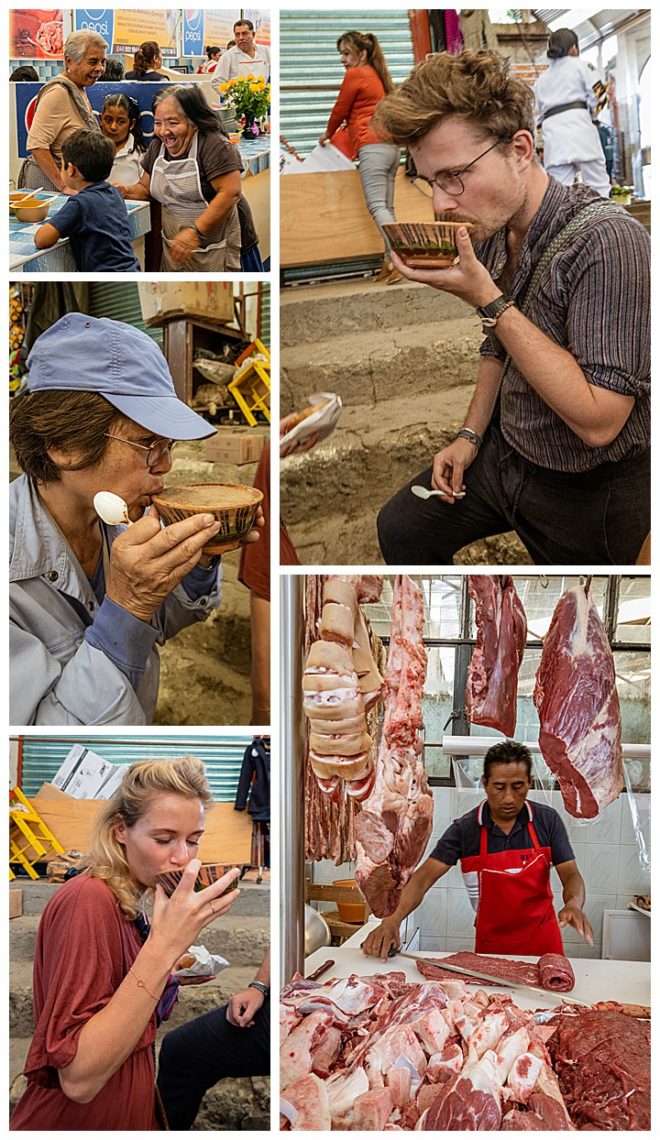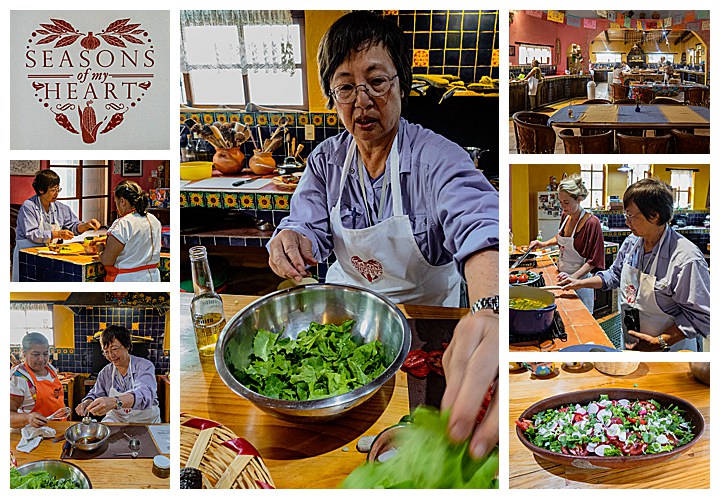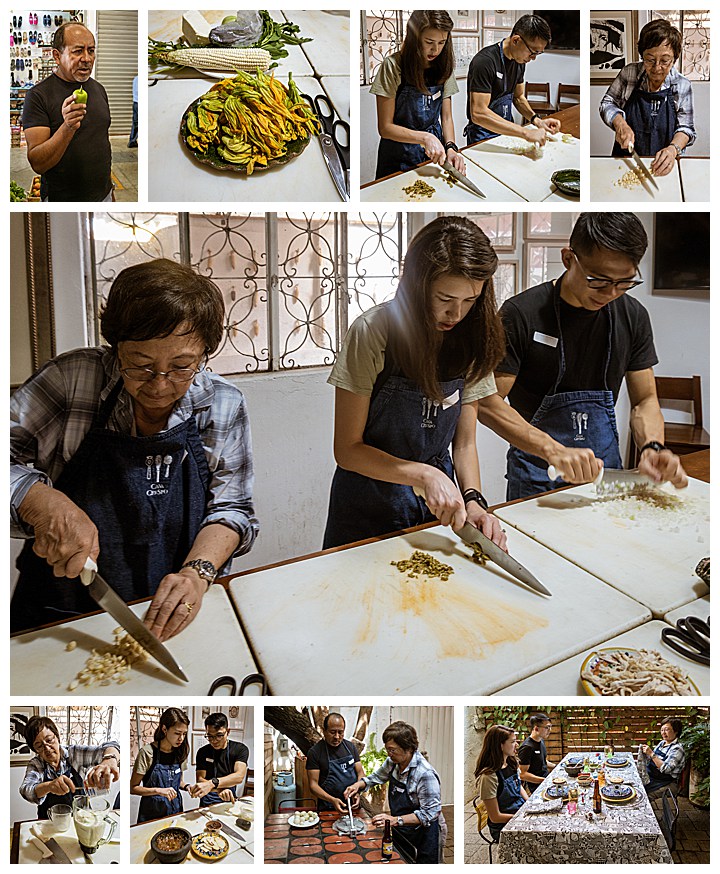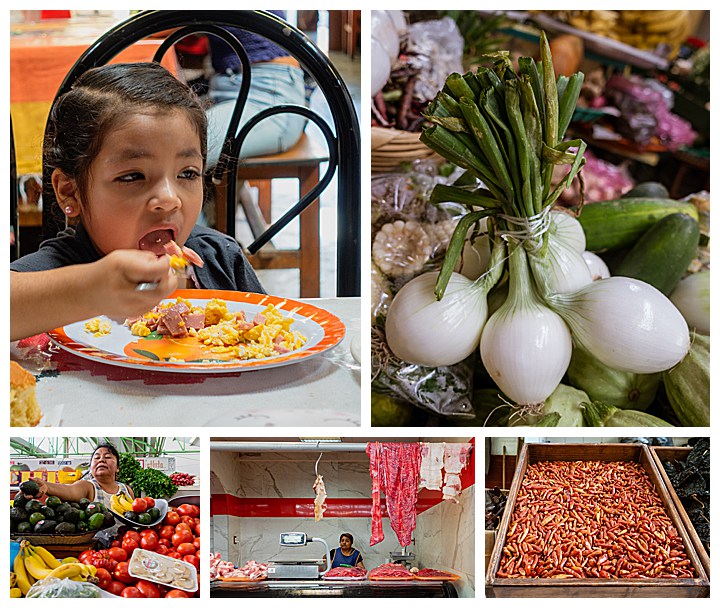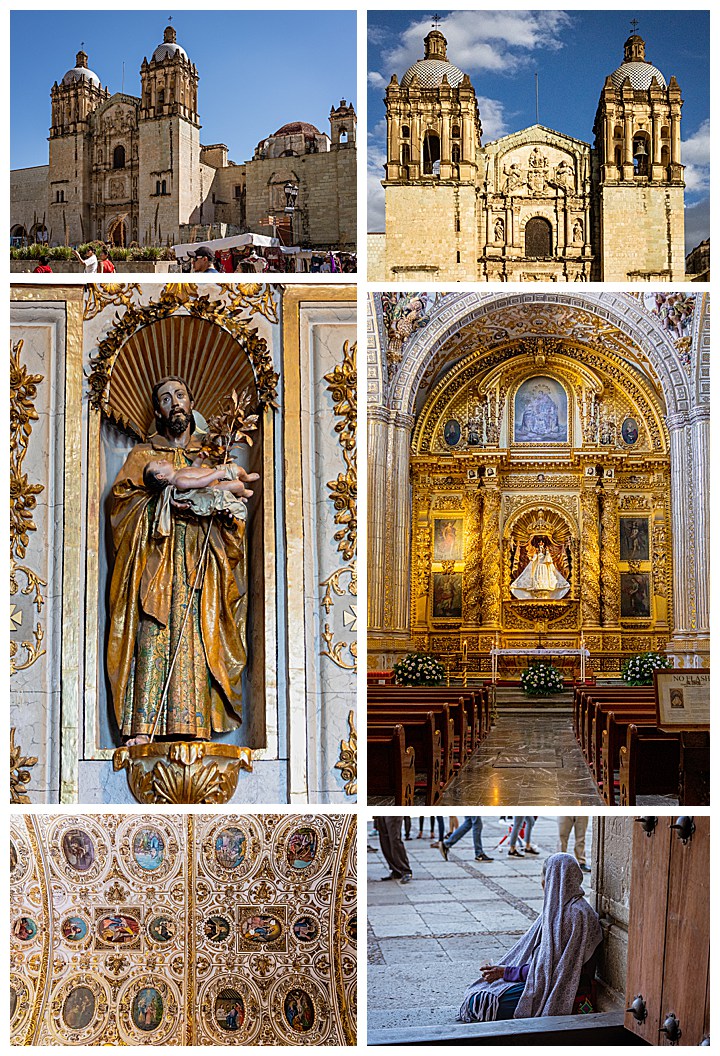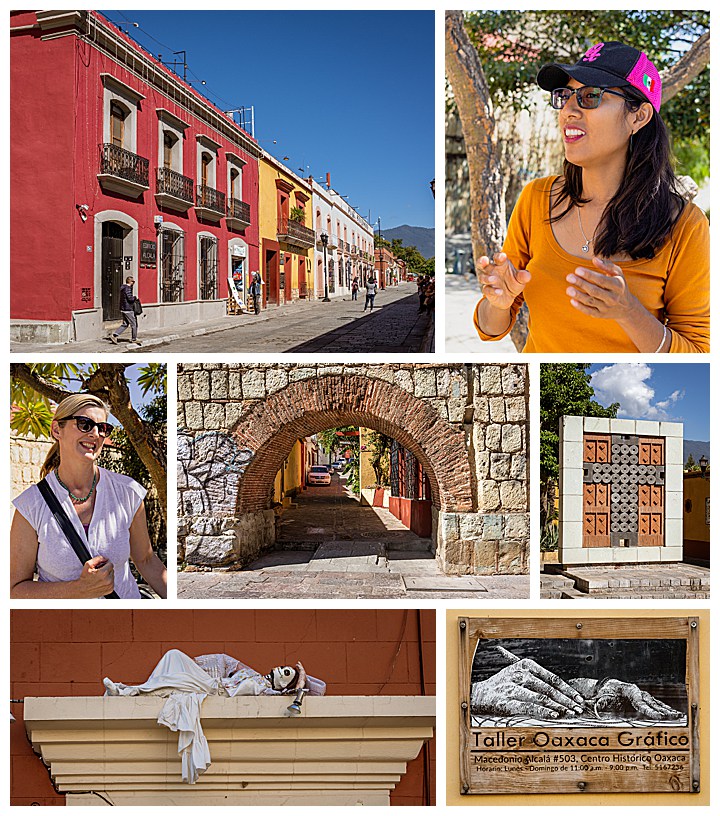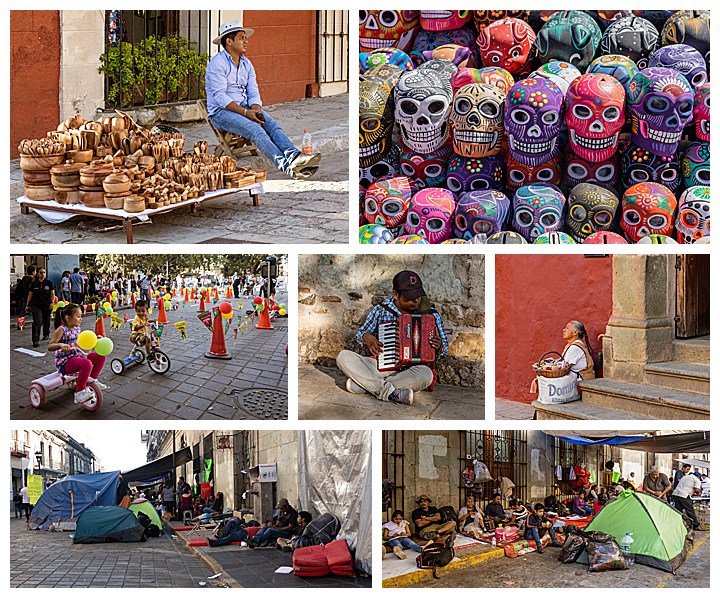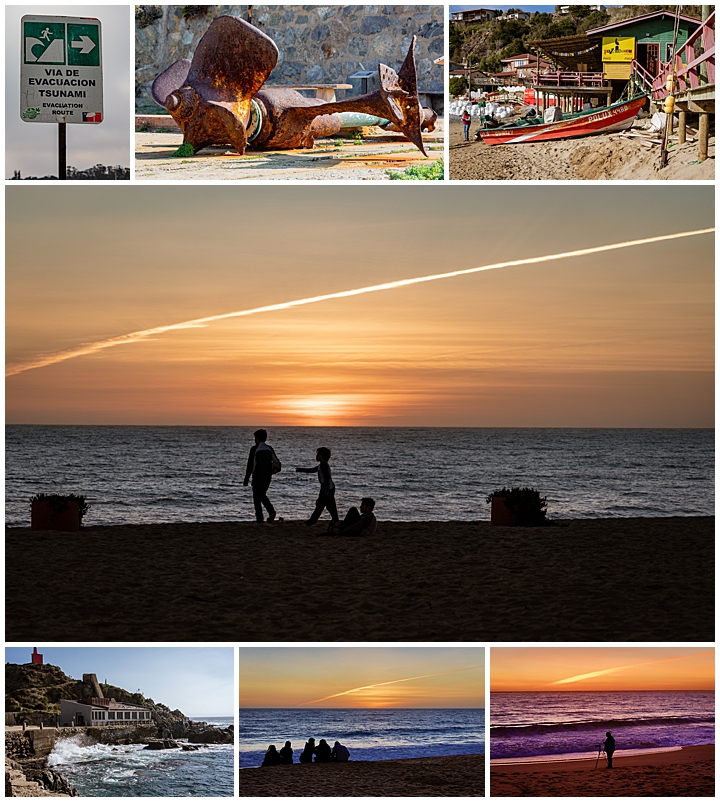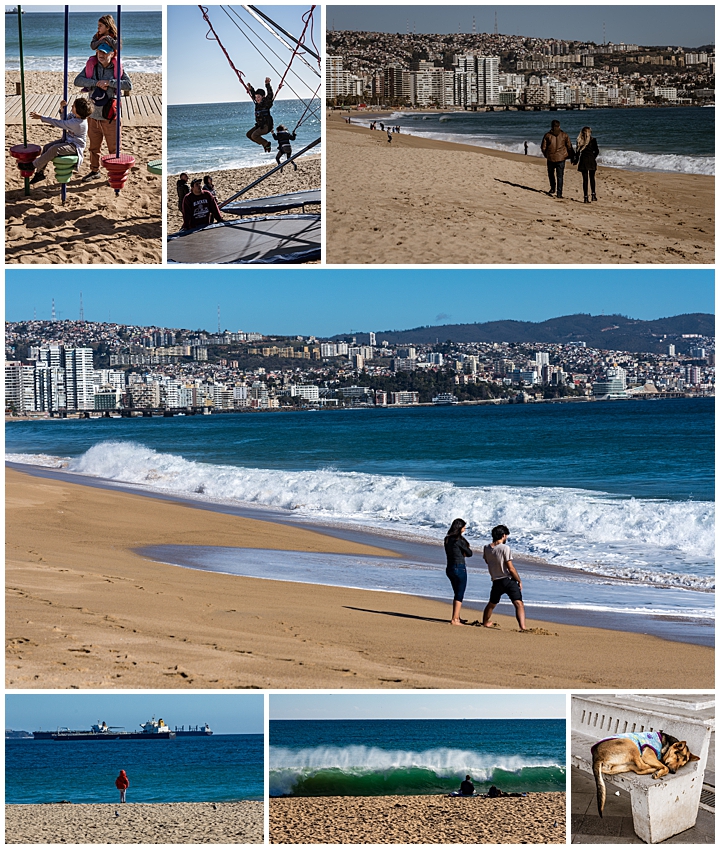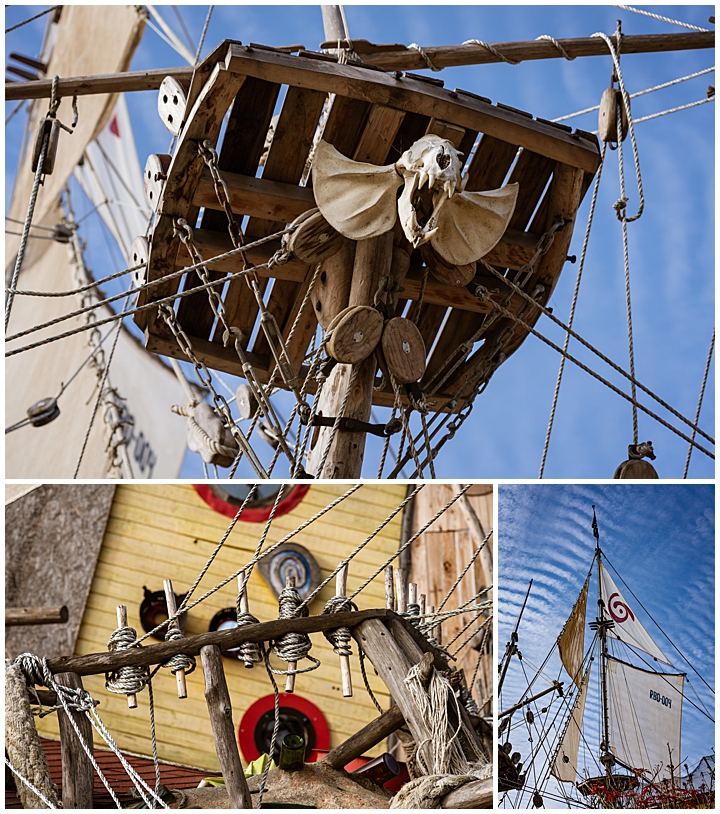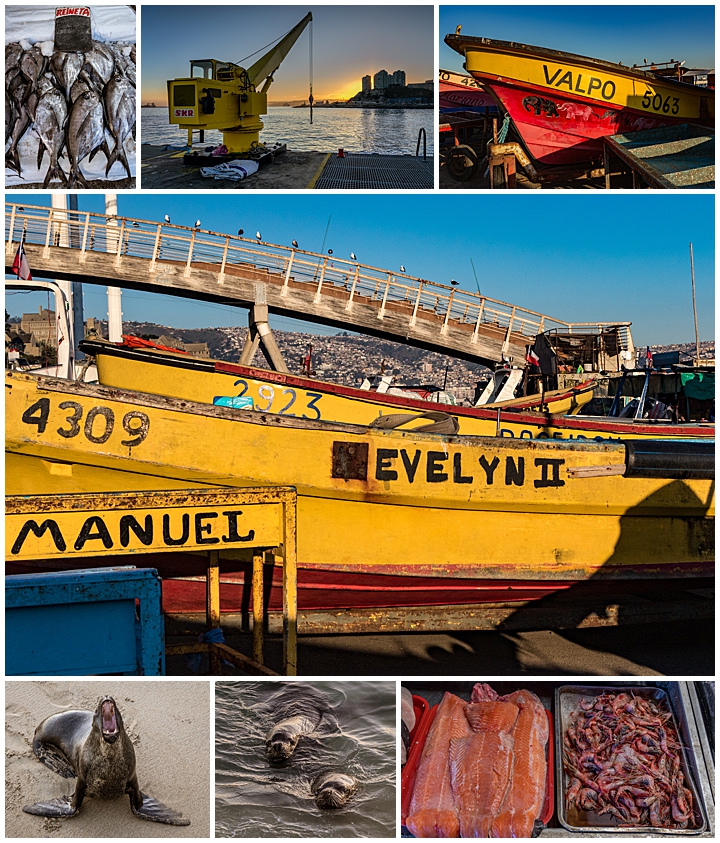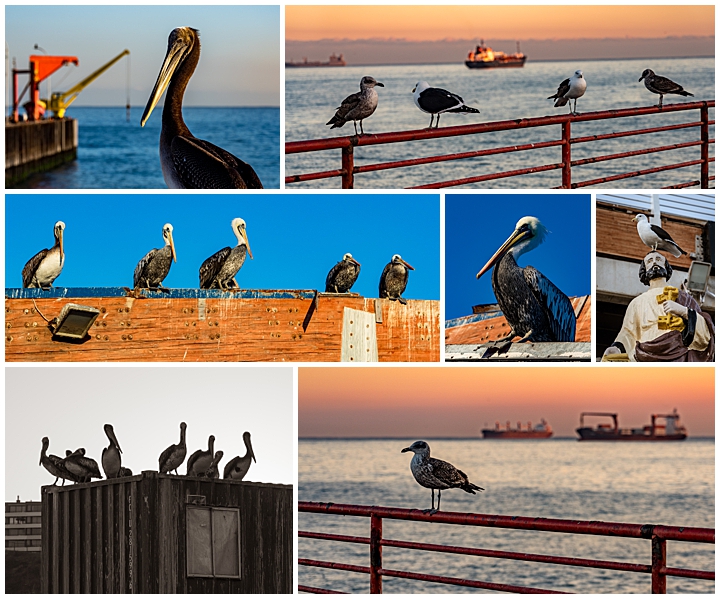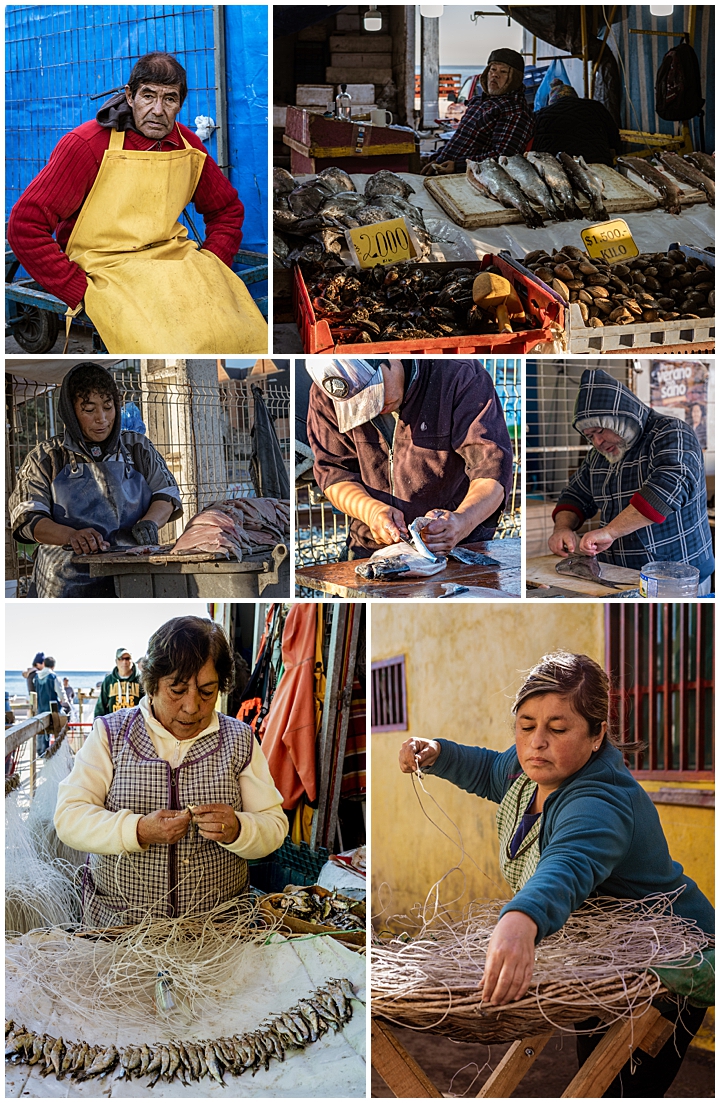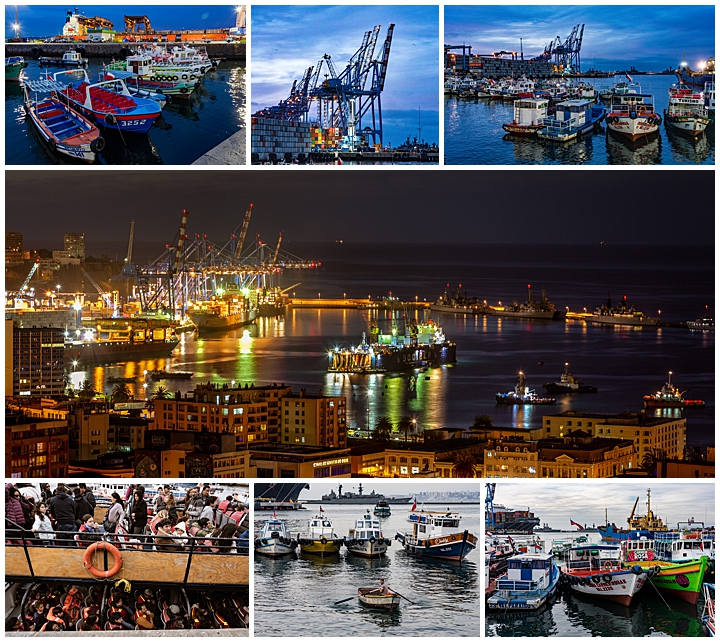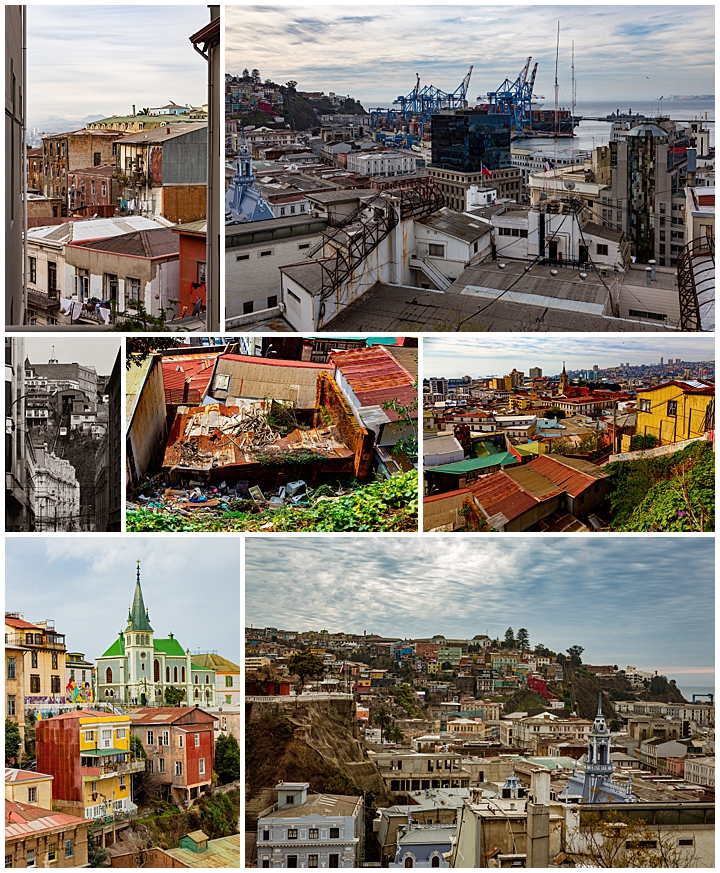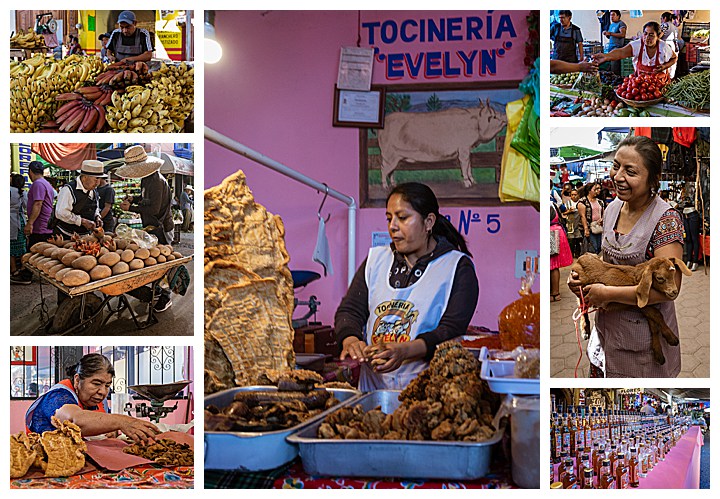
We have come to the end of our three week visit to Oaxaca, so let’s wrap up with some overall impressions. There are a few things that stand out and can’t help but be appreciated.
First is the weather. We were here during late November and early December. The temperature was between the mid- 70’s and mid-80’s every day, while the nights would drop into the low 60’s. We never needed to wear a long sleeve shirt, let alone jacket while walking around the town, from 8:00 in the morning until shortly after dusk. No rain, and the only clouds were fluffy on the horizon. We could not have asked for better weather. Of course, it does give us pause to wonder about how the weather would be in the Summer. We may come back and check that out at some point.
Traffic was another pleasant surprise. Cars routinely stopped for us as soon as we stepped off the curb. There were a few times when I stepped off the curb, looking for an opening in traffic a few cars back… only to have the front car stop and wave me across. Drivers really do give right-of-way to pedestrians here. Car-to-car is more on par with Cuenca though, with drivers frequently squeezing to assure nobody could cut in. Mostly being pedestrians, we received the more pleasant side of these exchanges though. And, we heard almost no car alarms. There is definitely a lot more traffic in town. Also, public transportation is quite affordable.
There were numerous mercados around town (as seen above) with lots of fresh fruit and vegetables, and mezcal. In most ways, they were the same as those we find in Cuenca. The people were universally pleasant, and most of the foods were similar. Oaxaca does not have any hornado, the roasted pig we enjoy in Cuenca. However, they had dried grasshoppers, and Tejate. With mezcal being such a trademark export from Oaxaca, you can also count on seeing a few small vendors selling their homemade brews, no FDA approval needed.
Some memories which will be forever etched in our minds. One is the daily street vendors shouting at the top of their voices what sounded like …”GUA” “GUA”, but which was actually “AGUA”, as they sell 5-gal bottles of water door-to-door. Another was the sounds of cows. “MOO-OO-OO”, which was the propane tank dispensing trucks announcing their arrival at least twice per day. Then, there was the cascade of water trickling down our roof, letting us know that the water tank on the roof was full, and we can again take a shower and flush our toilets. Of course, gravity-fed water also meant wimpy shower pressure. Oaxaca, like Cuenca, is not a sidewalk friendly town and you really have to watch where you’re walking. However, there are very few stray dogs, and most pets are behind fences. Finally, they do have mosquitos here, though we were at the end of the season and never got bit by them on this trip.
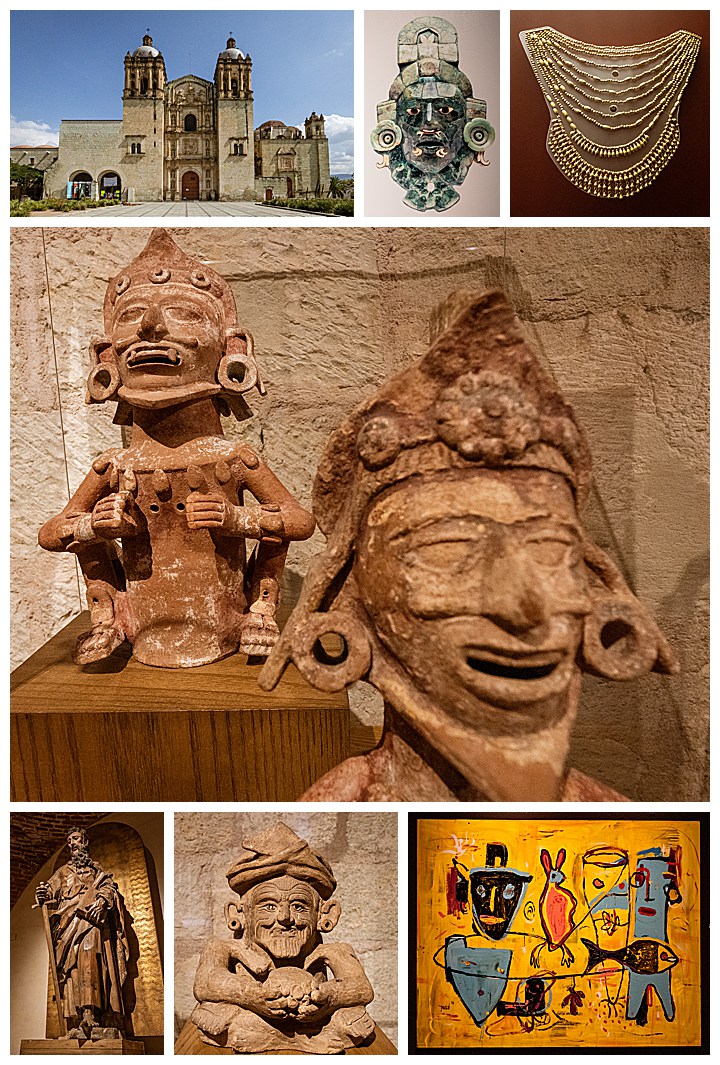
Oaxaca is a city rich in culture, visual arts and textiles. Though not as many Catholic churches exist as in Oaxaca, most are open to enter, and many have museums attached. One such example is the Templo Santo Domingo (upper left), which has a large cultural museum that requires hours to cover (remainder of images above).
Every week, there always seems to be something happening, so there is no shortage of things to do. You can listen to live music performances, watch pop-up parades celebrating weddings, birthdays, protests, hikes, tours, etc. Like Cuenca, Oaxaca likes their rockets and noise. Mariachi bands play at the mercados, and the concerts from the auditorium at the top of the hill can be heard over the entire city.
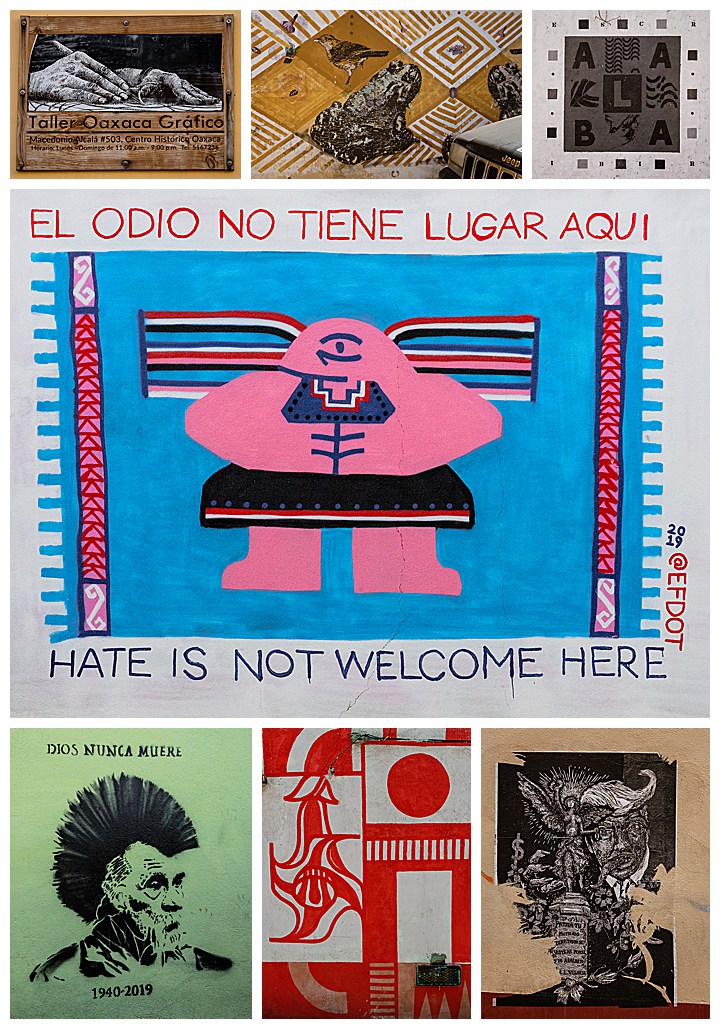
Murals are common throughout town. Whereas most murals in Cuenca are painted directly on the wall freehand, the mural artwork in Oaxaca tends to be more in the style of graphic designers. Many of the murals are spray painted through a stencil (lower-left, commemorating a local famous artist who died earlier this year), or are simple stencils pasted onto the wall (lower-right). These are clearly art and improve the appearance of the neighborhood, but do not exhibit the artist sophistication of many of the murals in Cuenca.
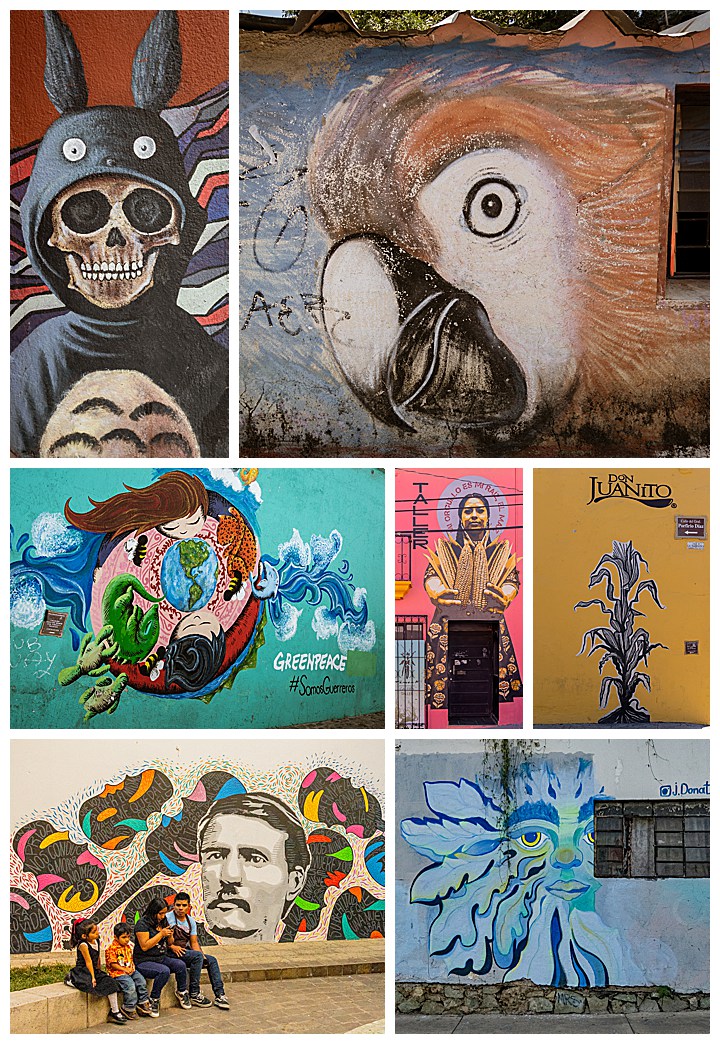
If you look close enough though, you can also find more conventional freehand art murals painted on walls also. Sometimes they have clear protest orientation (middle-left), and other times are used to add beauty to a local store (middle).
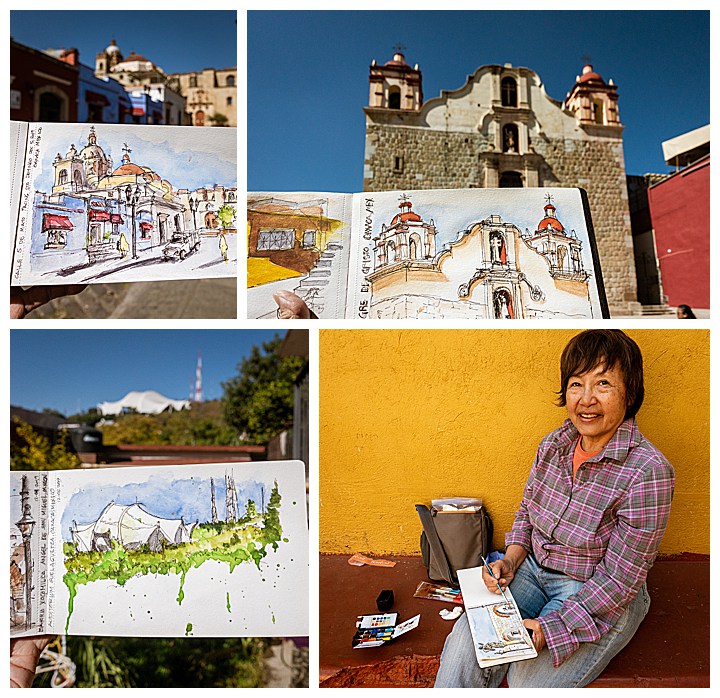
This was not intended to be a photography-intensive vacation. Rather, we were relaxing, and exploring a city we had not visited since 1985, 34 years ago. Evelyn therefore had time to take out her sketchbook and do some quick paintings of urban scenes around town. She joined Urban Sketchers Oaxaca while here, a network of artists who draw on location and “see the world, one drawing at a time”.
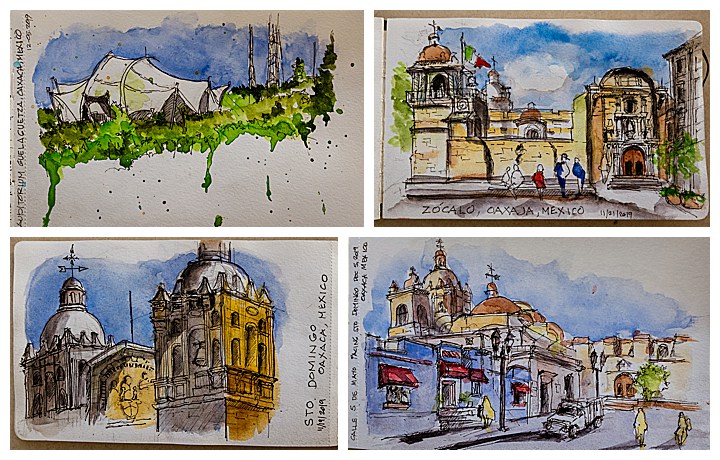
Here are a few of the sketches she produced during our stay in Oaxaca. Upper-left is the auditorium that oversees the town, and can be heard throughout el centro whenever there is a concert in progress. This was painted from the landing of our Airbnb on the last day. Blue skies, vivid facades, pleasant temperatures, slow pace and drink the beer.

